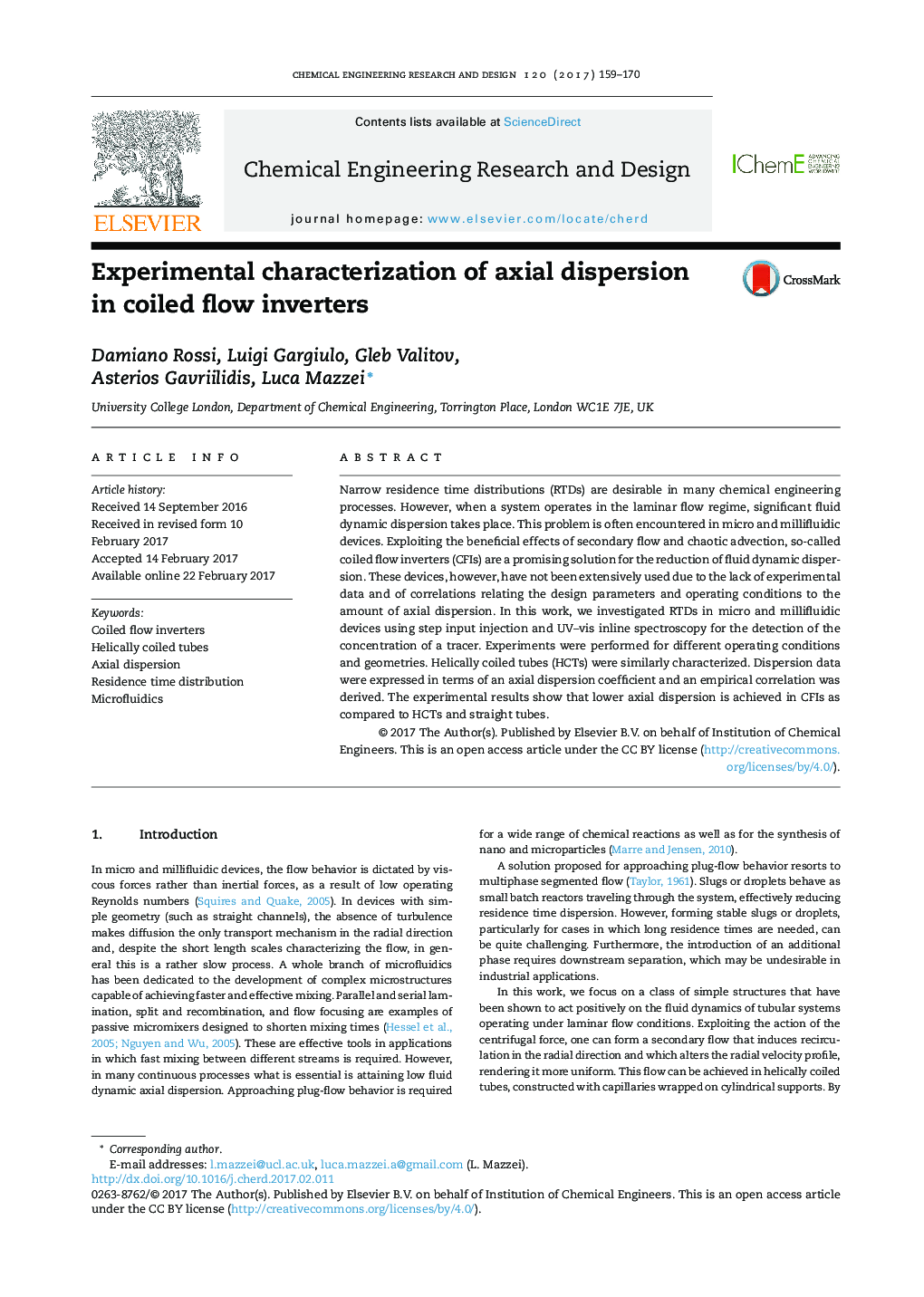| Article ID | Journal | Published Year | Pages | File Type |
|---|---|---|---|---|
| 4987114 | Chemical Engineering Research and Design | 2017 | 12 Pages |
Abstract
Narrow residence time distributions (RTDs) are desirable in many chemical engineering processes. However, when a system operates in the laminar flow regime, significant fluid dynamic dispersion takes place. This problem is often encountered in micro and millifluidic devices. Exploiting the beneficial effects of secondary flow and chaotic advection, so-called coiled flow inverters (CFIs) are a promising solution for the reduction of fluid dynamic dispersion. These devices, however, have not been extensively used due to the lack of experimental data and of correlations relating the design parameters and operating conditions to the amount of axial dispersion. In this work, we investigated RTDs in micro and millifluidic devices using step input injection and UV-vis inline spectroscopy for the detection of the concentration of a tracer. Experiments were performed for different operating conditions and geometries. Helically coiled tubes (HCTs) were similarly characterized. Dispersion data were expressed in terms of an axial dispersion coefficient and an empirical correlation was derived. The experimental results show that lower axial dispersion is achieved in CFIs as compared to HCTs and straight tubes.
Related Topics
Physical Sciences and Engineering
Chemical Engineering
Filtration and Separation
Authors
Damiano Rossi, Luigi Gargiulo, Gleb Valitov, Asterios Gavriilidis, Luca Mazzei,
